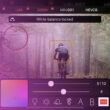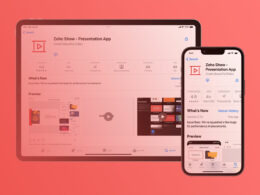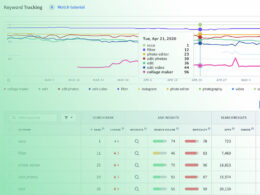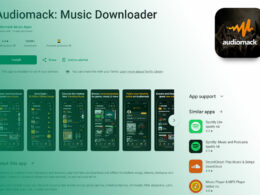In the ever-evolving cosmos of mobile applications, ASO A/B testing emerges as the beacon guiding developers to success. Picture this: Two realms, indistinguishable at first glance, split by a simple choice—one change in your app’s virtual shopfront.
Here lies the essence of our quest—harnessing the subtleties of split testing to catapult our app’s presence in the bustling App Store.
Today’s landscape demands precision. Striving for optimal visibility in Google Play or the Apple App Store transcends guesswork. It’s an art—a science.
Engagement statistics whisper tales of user preferences, guiding us to make data-driven judgments that propel downloads, ratings, and retention rates into new stratospheres.
You’re in the driver’s seat, armed to maneuver through the A/B testing journey. By article’s end, expect a magician’s savvy to test app icon magnetism, master screenshot optimization, and unravel the enigma of click-through rates.
Permit no stone unturned as we dissect metrics and KPIs, translating analytics into actionable insights.
Prepare for a metamorphosis in perspective, as we explore the realms of mobile A/B testing tools, mobile user behavior, and those algorithm updates that keep us on our toes. Welcome, traveler, to the pivotal pivot on your app’s voyage to stardom.
Preparing for Your First A/B Test
Understanding the Basics

A/B testing, man, it’s like picking the red or blue pill. Every choice steers the journey of your app’s fate, right?
At the heart of it all is crafting two worlds – the one your app knows, and one that could be. Let’s tease out the nitty-gritty.
Components of A/B testing: Variants, Control Group, and Key Performance Indicators (KPIs)
Imagine two doors. Behind door number one, you’ve got your app as is – let’s call that the control group. Door number two swings open to the variant, the tweaked version, spiffed up and shiny. Could be a bolder icon, a snappier title, or screenshots that scream “tap me!”
Now, how do you measure which door leads to the promised land of more installs? Enter KPIs. These are your treasure map.
We’re talking download rates, engagement stats, all the signposts that tell you if you’re onto something hot or just a mirage.
Selecting elements for testing: Icons, screenshots, descriptions, etc.
Each element is like a chess piece, right? Move one, and the game changes. Do you shift the icon and play it bold?
Or maybe rejig those screenshots for a slicker storyline? And the app description – that’s your elevator pitch; it’s gotta be tighter than your favorite jeans.
Setting Clear Objectives
It’s not just about changing stuff and hoping for the best. You’ve gotta know what you’re aiming for. Like, what does winning look like for you?
Defining measurable goals
It’s all about clarity. Say, “I want more eyes on my app” or “I’m gunning for a better install rate.” Make the goals tangible, so you know exactly when the cork pops and it’s time to celebrate.
Identifying target metrics for success
You’ve got your goals, now which metrics will play back-up? Is it that uptick in installs? Perhaps more thumbs-ups on your app’s rating? Lock in those targets. Chase them down.
Hypothesis Development
Before you dive in, take a beat. The hypothesis is your game plan – it’s the “why” before you roll the dice on changes.
Importance of a well-structured hypothesis
You need that one liner that crystalizes your aim. It’s like this – if I switch up the icon to this rad new design, then maybe more peeps will hit download because it pops more, you know?
Examples of effective hypotheses in ASO A/B testing
Let’s riff on some examples. “If we tweak the first screenshot to show the app’s newest feature, we’ll see a jump in user interest because it answers their ‘what’s in it for me’ right off the bat.”
Boom, hypothesis set. Or, “Revamping the app title to include this snazzy keyword might boost visibility when folks hit up the App Store search.” It’s all about predicting the power move before you make it.
Now, get out there and test the waters. May the data be ever in your favor.
Implementing A/B Tests in Different App Stores
Google Play Store
Utilizing Google Play Console’s A/B testing tools
Dive into the Google Play Console and it’s like a Swiss Army knife for ASO A/B testing. They’ve got these tools, right?
They’re pretty slick for juggling your app’s look and feel. You tweak an image here, a phrase there, and boom, you let the data roll in. It’s real-time feedback, served fresh.
Strategies for effective A/B testing on Android
Think of it like this: Android users are everywhere. Different phones, different places, different vibes.
So when you’re playing in the Android sandbox, make your A/B tests wide-reaching. Mix and match elements like app icons and screenshots, but don’t stop there. Test the waters with different languages—global means more eyes on your app.
Apple’s App Store
Navigating through App Store Connect for A/B testing
Now, pivot to the App Store, and you’ve got App Store Connect. It’s your command center, but with a catch—Apple’s a bit more, let’s say, exclusive with their A/B testing scene.
You’ve got to be savvy, play around with the metadata, and gather your intel from the shadows.
Limitations and opportunities in iOS A/B testing
Your hands are a bit tied, sure. Direct A/B testing in the Apple universe isn’t a walk in the park.
But here’s where creativity kicks in. Use those download numbers, watch those ratings, and read between the lines of those reviews. That’s your goldmine.
Third-Party A/B Testing Tools
SplitMetrics
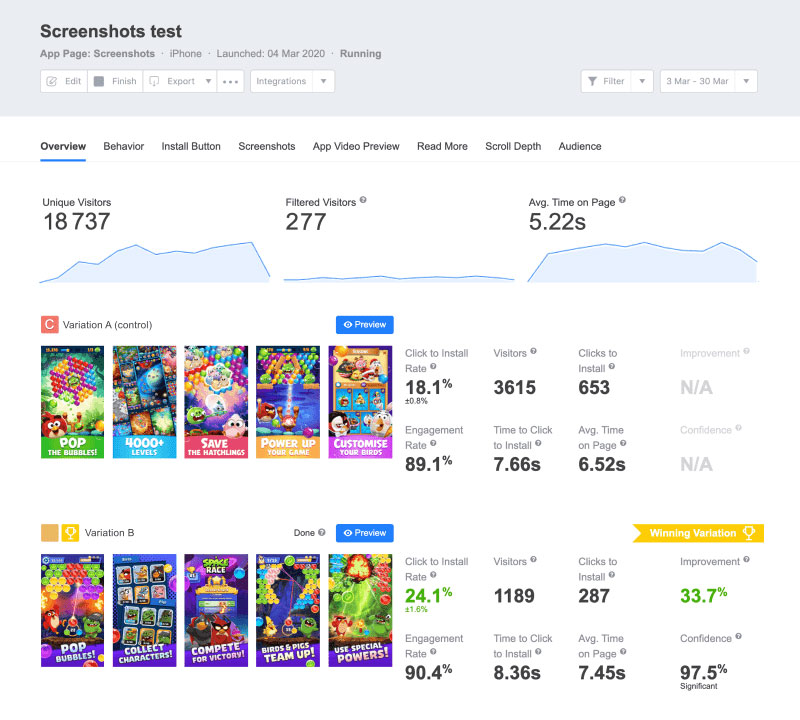
SplitMetrics shines as a beacon for app developers looking to navigate the choppy seas of A/B testing. By offering a sleek and intuitive platform, this ASO treasure trove allows the analytically-minded to conduct meticulous experiments with app store page variations. Identify which screenshot ensemble captivates your audience or which app icon sparks the most installs.
- Split testing precision
- Conversion rate analytics
- Rich metadata insights
What we like about it: SplitMetrics’ standout feature is its robust analytics dashboard—a command center for monitoring your app’s voyage through optimization, giving you the power to make data-driven decisions with ease.
StoreMaven
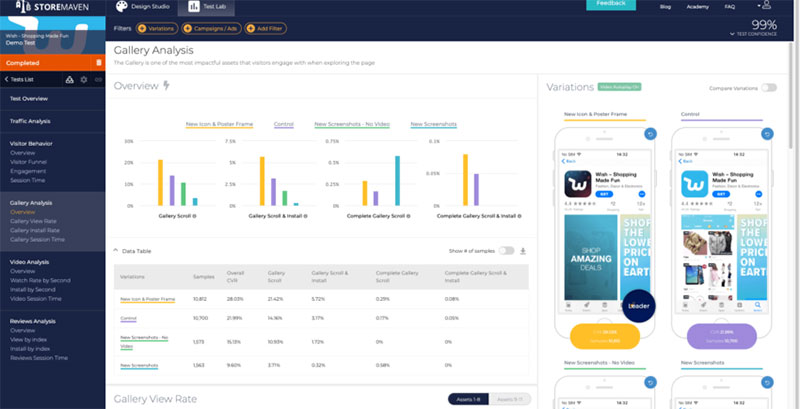
With StoreMaven, welcome to a new era of conversion rate optimization. The platform serves up a deeply analytical suite specifically engineered for the labyrinth of ASO experiments. Focusing on app store behavior, it digs diligently into user interactions.
- Behavioral analytics prowess
- User engagement optimization
- Visual optimization strategies
What we like about it: The most praised feature here is StoreMaven’s behavioral analytics, which meticulously tracks user journeys, turning every tap and swipe into actionable insights.
App Radar
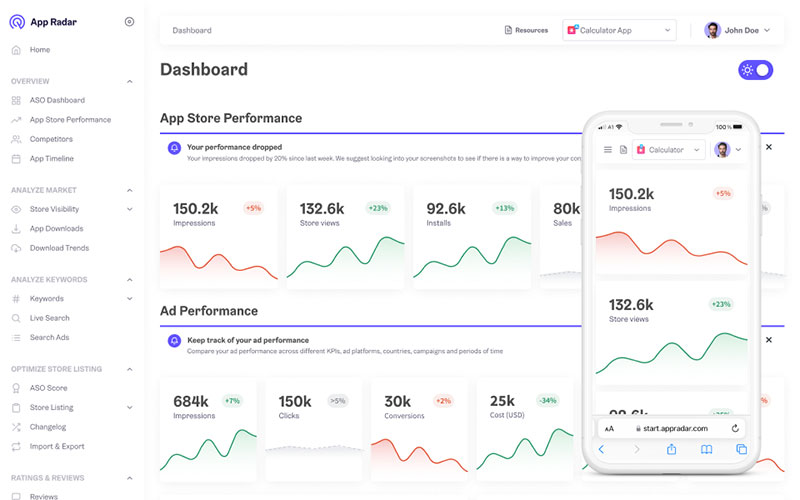
App Radar brings to the fore a harmonious blend of ASO tooling and A/B testing functionality. It serves as a multi-faceted beacon for improving app visibility in an overcrowded digital marketplace. The platform stands ready to guide app creators through the murk of metadata optimization and beyond.
- Advanced ASO toolset
- Real-time ranking monitoring
- Simplified keyword tracking
What we like about it: What captivates most with App Radar is the real-time ranking monitoring, offering immediate insights after making adjustments to your app’s market presence.
Mobile Action
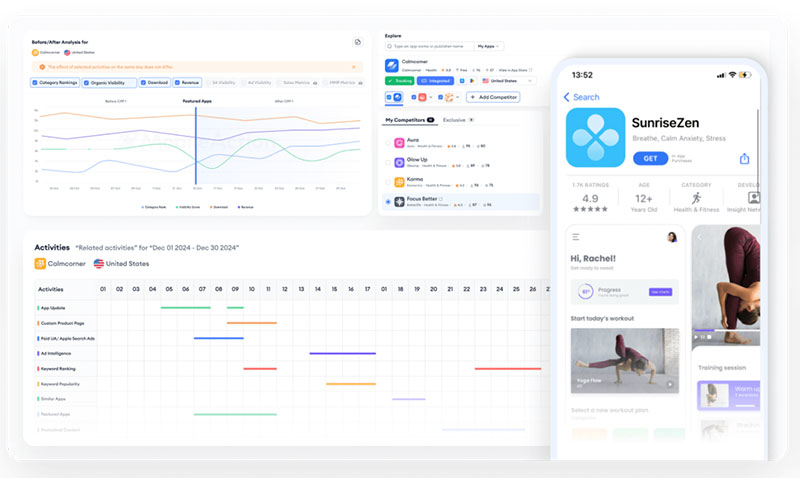
Dive into Mobile Action for a comprehensive ASO solution that stretches the boundaries of conventional A/B testing. The platform projects detailed insights into competitive intelligence, marrying app store analytics with actionable user acquisition strategies.
- Competitive intelligence toolkit
- Keyword optimization excellence
- Detailed market analysis
What we like about it: Its standout feature is competitive intelligence, enabling app developers to swarm ahead of their competition by leveraging data that’s as deep as it is actionable.
Designing Effective A/B Tests
Choosing Test Elements
A/B testing—it’s like deciding what sneakers to rock at a party. You wanna turn heads, but not trip over your own feet.
Same story with tweaking your app on the sly to see what gets people downloading.
Identifying elements with the highest impact potential
Look, not all changes will have folks buzzing. You’ve gotta zero in on the big-hitters—the icon that’s gonna pop on their screens, or that first screenshot that tells your app’s story at a glance.
Think of it, icons and screenshots are the handshakes and first impressions in the app world.
Common mistakes in selecting test elements
But hey, don’t fall for the trap of changing for change’s sake. You’ll see some folks tweaking the smallest things, like a comma in their app description.
Spoiler: That comma won’t light any fires under your downloads chart.
Traffic Allocation and Test Duration
Once you’ve picked your wardrobe, it’s showtime. But how much spotlight does each outfit get?
And for how long do you step out before deciding whether it’s a hit or a miss?
Determining the optimal traffic split
Now, you’ve got your regulars and the fresh eyes. How much of each crew gets a peek at your new style? Go halfsies, or maybe ease in with a 70-30 cut.
The goal is to give both versions a fair shake with different crowds.
Deciding on the test duration for reliable results
And time – it’s a sneaky beast. Run your test too short, and you might miss a beat. Too long, and guess what?
The party’s over, and you’re left dancing alone. Aim for that sweet spot, long enough to catch a trend, short enough to keep it fresh.
Visual and Textual Changes
Remember, it’s like painting a picture with a dash of poetry. What you show and tell in your app listing, it’s gotta sing in harmony.
Impact of visual changes (screenshots, icons)
Big, bold, and beautiful or subtle and sleek? Visual tweaks can make eyes stick.
They say, “This app is your next favorite thing.” Icons and screenshots are your stage lights and smoke machines. They set the scene.
Role of textual modifications (titles, descriptions)
Then there are the words. The right title might be the chant that gets the crowd roaring.
But sprinkle in some mystery or pizzazz in your description, and you’ve got ’em hooked for an encore. Get them to tap that download button as if it’s the beat drop they’ve been waiting for.
Analyzing A/B Testing Results
Interpreting Data
Okay, picture you’ve just hit the finish line of your test run; your legs are jelly, but your eyes are all on that stopwatch.
Understanding key metrics and statistical significance
Stats and numbers are your mile markers here, telling you how far you’ve come and how your changes measure up.
We’re not just counting downloads; we’re looking at engagement, retention, and those nitty-gritty conversion rates. And there’s a need to get stats-savvy—ensure those number shifts aren’t just flukes.
Tools and techniques for data analysis
It’s not all spreadsheets and snooze though. There are rad tools that turn columns of numbers into charts you can actually read at a glance.
Whether you’re digging through Google Play Console or wielding something more heavy-duty like App Annie, it’s all about getting the story behind the digits.
Making Informed Decisions
Now comes the clutch moment. You’ve got this chunk of fresh intel, what’s your play?
When to implement changes based on test results
If that door #2—the one with the flashy new icon—brought in a crowd, you might wanna leave it open.
But let’s be real, when changes fill seats and bump up ratings, you green-light those bad boys into your main act.
Handling inconclusive results
But it ain’t all standing ovations and encores. Sometimes the audience is quiet; numbers don’t jump. Don’t sweat it. Not every riff lands a hit.
That’s your cue to step back, tweak, and slide out for another test spin.
Learning from Failed Tests
Even a faceplant can teach you how to nail that backflip next time around.
Analyzing reasons behind failed tests
Dive deep. Was the new icon too out there, or did that tagline not sing?
Pick apart the test’s gears—messaging, visuals, the works. Sniff out where the tune went off.
Iterative testing based on learned insights
And then, it’s back to the lab. Mix up a new batch with a pinch of what you’ve learned, maybe less spice on the visuals or a punchier one-liner.
Load it up and roll it out. Each round is another shot to get that crowd roaring.
Advanced Strategies and Considerations
Segmenting Your Audience
When diving into ASO A/B testing, it’s like you’re the DJ at a massive party, laying down tracks.
You’ve got one shot to get folks grooving, but the crowd’s diverse. They’re from different places, different scenes. So, what do you spin?
Importance of audience segmentation in A/B testing
Segmenting is splitting your crowd into VIP sections—the regulars, the newbies, the high-rollers.
It’s about knowing who’s who, so when you drop that beat—your app’s latest feature—it lands right where it should. Different beats for different peeps.
Strategies for effective segmentation
It’s all about vibes. Young users might be digging one icon, while another hits home with parents.
You segment, run separate tests, and suddenly, you’re speaking everyone’s language. It’s about fine-tuning your reach to dial into their heads.
Localized Testing
Then, you’ve got this global scene—users across borders and seas. You gotta show each of them you know their groove.
Adapting tests for different geographical markets
Different strokes for different folks, you get it? An icon that’s lit in one country might be a total flop in another. Tailor your visuals, your wording, to resonate locally.
Cultural considerations in A/B testing
It goes deeper than language, though. It’s colors, symbols, even the vibe of your app’s name.
Culture is key.
Your A/B tests gotta respect the local beat, or you’ll find your app sitting out the dance altogether.
Seasonal and Trend-Based Adjustments
And then, amid all the ASO A/B testing razzle-dazzle, time keeps ticking, bringing shifts and sways in what’s fresh.
Adjusting A/B tests according to seasonal trends
Deck the halls, bring out the pumpkins, or sprinkle some summer vibes. Seasonal spins make your app resonate with the here-and-now. It’s about timing—catching the wave of holiday cheers or summer road trips.
Incorporating market and user behavior trends
Trends are like whispers of what could be the next big hit. Keep a finger on the pulse—what’s the word on the street? What’s making noise? Fold those trends into your tests. Today’s meme could be tomorrow’s update making your app the talk of the town. It’s about staying woke to the play, tuning into that rhythm, keeping your app in sync.
FAQ On ASO A/B Testing
What is ASO A/B testing?
ASO A/B testing is like try-before-you-buy, but for app features. You set two different versions of your app’s storefront elements, like icons or descriptions.
Whichever one gets the most love—clicks, downloads, engagement—that one takes home the crown.
Can ASO A/B testing improve my app’s ranking?
Absolutely, my app’s ranking soared after fine-tuning based on A/B tests. It zeroes in on what users like, and a happy user often leads to better reviews and more downloads, pushing you up the charts.
How long should I run an A/B test for my app?
Give it a good fortnight at least. Two weeks is a sweet spot for most tests. It gives enough time for patterns to emerge without dragging your feet. One-time events won’t skew your results this way.
What elements should I test in ASO A/B testing?
Start with high-impact stuff—icons, screenshots, titles. Think about first impressions here. They’re like the headline of your app’s story. If they stand out, people stick around to read the rest.
Do I need a big user base for effective A/B testing?
Not necessarily. Quality over quantity, right? Even a modest, engaged user base can give you gold. Just make sure your sample size has enough oomph to get reliable data. It’s about the insights, not just the numbers.
Is ASO A/B testing only about the visuals?
Nope, it’s a full package deal. Visuals hook ’em, but it’s the mix—titles, descriptions, even price point—that reels ’em in. A/B test a blend of elements to see how they vibe together.
What’s the main goal of ASO A/B testing?
Eye on the prize—a better-performing app. We’re after more installs, clicks, and engagement. It’s finding what works like magic for your app and what makes users tick. That’s the golden ticket.
How often should I conduct ASO A/B tests?
Keep it rolling, season to season. Regular tests—with updates, new features, shifts in trends—help stay current. Just give some breathing room between each to really nail what works.
How do I know if my A/B test is statistically significant?
Geek out a bit on the metrics, and keep an eye out for patterns that stick even as the days go by. If changes are consistently moving the needle over time, not just in a one-off spike, that’s something to write home about.
What if my A/B testing results are inconclusive?
Hey, it happens. Take it as a sign to switch up your hypothesis. Dive into user feedback, get a fresh angle, then test a new variant. Inconclusive means there’s more to the story—keep digging.
Conclusion
Wrapping up, ASO A/B testing isn’t just a one-off; it’s an expedition into what sings to your audience. It peels back layers, revealing golden nuggets of user behavior and preferences.
Through split testing, icons transform into beacons, screenshots into stories, and descriptions into invitations, each vying to captivate and convert passersby into loyal followers.
Like an architect with a blueprint, this practice empowers the crafting of a virtual storefront that’s not just pleasing to the eye but magnetic to the touch.
It turns guesswork into a strategic symphony, where every note—every change—is intentional and every silence—every inconclusive result—pauses for reflection and iteration.
Embarking on ASO A/B testing is committing to a fluid dance of tweaks and tunes.
For those willing to listen to the rhythm of the data and embrace the cadence of continuous improvement, the crescendo is a harmonious app presence that echoes across app stores and devices alike. So go on, set the stage, and let the testing begin.
If you liked this article about ASO A/B testing, you should check out this article about app subtitles.
There are also similar articles discussing mobile apps KPIs, Android app store optimization, app store ranking algorithm, and app store keyword search volume.
And let’s not forget about articles on app keyword research, game ASO, Google Play store ranking algorithm, and Google Play store screenshot sizes.
- Professional Video: Cinematography Apps Like FiLMiC Pro - April 26, 2024
- Optimizing Your Shopify Store for Maximum Dropshipping Success - April 26, 2024
- Python Explained: What is Python Used For? - April 26, 2024

